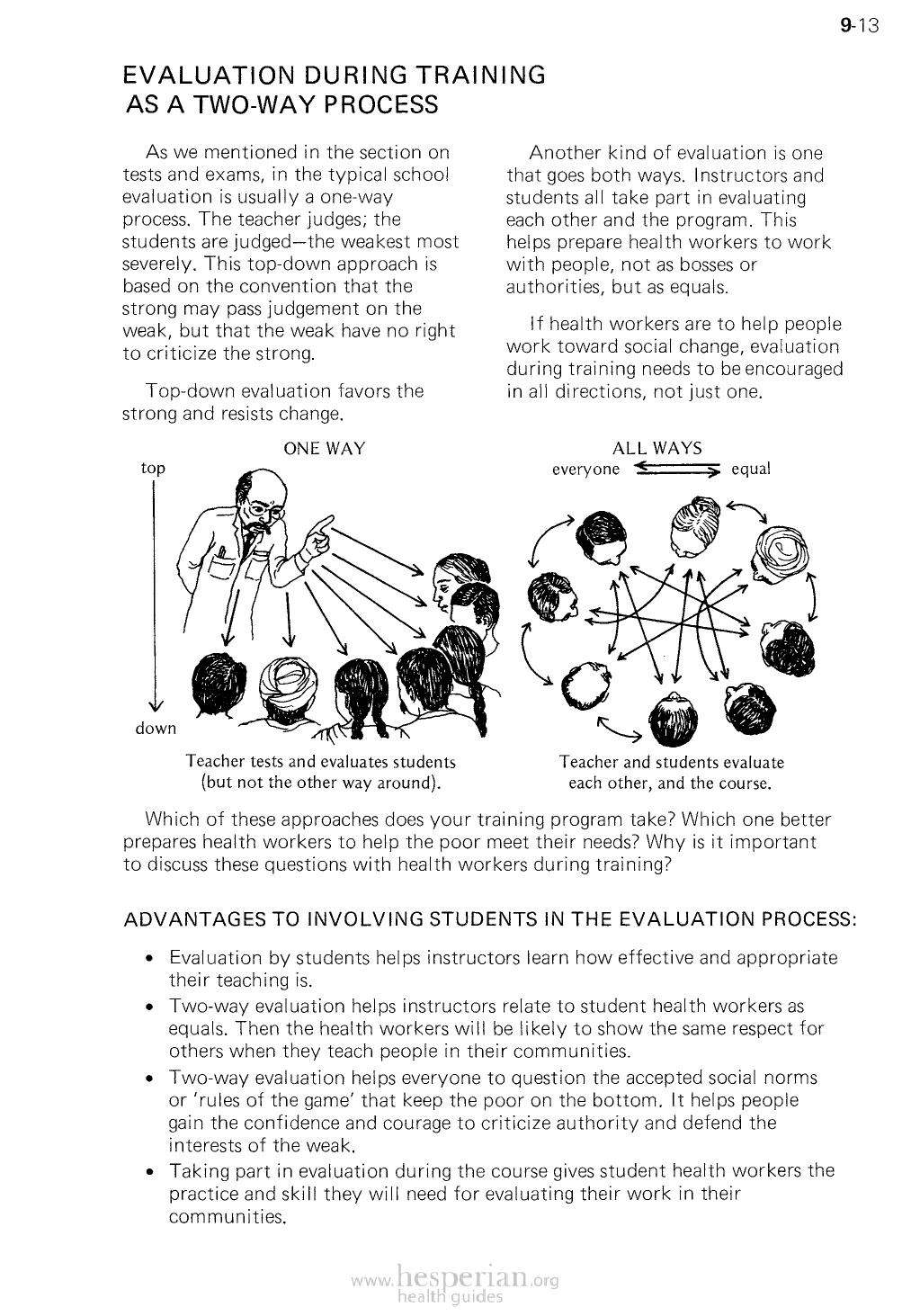
9-13
EVALUATION DURING TRAINING
AS A TWO-WAY PROCESS
As we mentioned in the section
on tests and exams, in the typical
school evaluation is usually a one-
way process. The teacher judges; the
students are judged—the weakest
most severely. This top-down
approach is based on the convention
that the strong may pass judgement
on the weak, but that the weak have
no right to criticize the strong.
Top-down evaluation favors the
strong and resists change.
ONE WAY
top
Another kind of evaluation is one
that goes both ways. Instructors and
students all take part in evaluating
each other and the program. This helps
prepare health workers to work with
people, not as bosses or authorities, but
as equals.
If health workers are to help people
work toward social change, evaluation
during training needs to be encouraged
in all directions, not just one.
ALL WAYS
everyone equal
down
Teacher tests and evaluates students
(but not the other way around).
Teacher and students evaluate
each other, and the course.
Which of these approaches does your training program take? Which one better
prepares health workers to help the poor meet their needs? Why is it important to
discuss these questions with health workers during training?
ADVANTAGES TO INVOLVING STUDENTS IN THE EVALUATION PROCESS:
• Evaluation by students helps instructors learn how effective and appropriate their
teaching is.
• Two-way evaluation helps instructors relate to student health workers as equals.
Then the health workers will be likely to show the same respect for others when
they teach people in their communities.
• Two-way evaluation helps everyone to question the accepted social norms or
‘rules of the game’ that keep the poor on the bottom. It helps people gain the
confidence and courage to criticize authority and defend the interests of the
weak.
• Taking part in evaluation during the course gives student health workers
the practice and skill they will need for evaluating their work in their
communities.